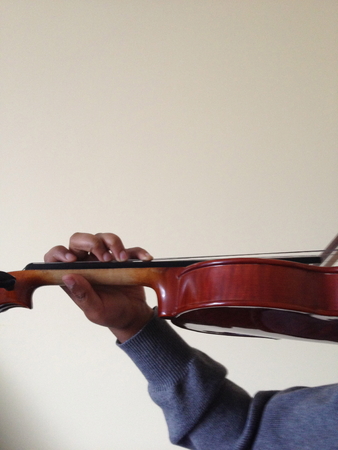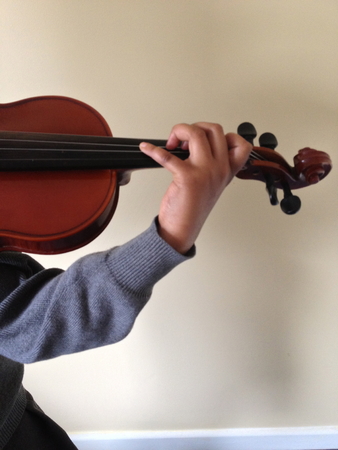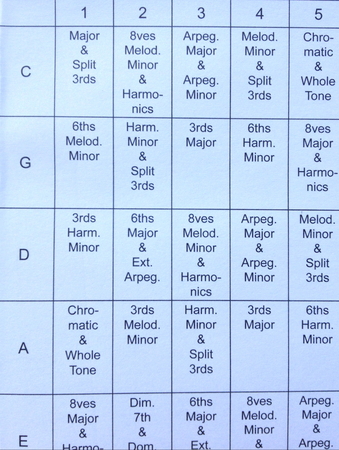Violin Finger Chart


Using a violin finger chart, or scale chart, will considerably enhance learning capabilities and may help the efficiency of the teacher during lessons in preparing for exams.
The violin finger chart on page 169 will give instructions so that violin finger positions may be easily obtained. By going to the corresponding pages throughout the manual it will be possible to understand the scale chart.

This can be read in any direction
The violin finger chart is made up of squares with each square owning a scale.
The letter names of each scale are placed vertically down either side of the page. The chart can be read horizontally from left to right and from right to left. This way each line, in both directions, represents a single key.
When the scale chart is read vertically from top to bottom or from bottom to the top, each square will represent a different key.
Reading the chart vertically will be the most efficient way to memorise scales.
Assimilation of each scale will be thorough if the chart is read from all directions.
To develop the geography of the violin fingerboard, it is recommended to select scales randomly in high and low keys. Using a metronome to gradually increase scale tempo, will make rapid passage work easier and will eventually improve violin finger positions over the violin fingerboard.
Co-ordination of both hands will improve, and a rounded tone will be experienced when playing in the higher registers of the instrument.
This will develop violin fingering technique, which in turn will allow greater physical flexibility and dexterity.
Violin fingering will be easier to memorise with regular use of the chart.
Double stopping sections of the chart will also help balance and strengthen the left hand. The practice of violin chords is an essential discipline to improve the ease of execution when performing virtuoso repertoire.
These elements will always vary, but should be constantly monitored if any part of a scale is proving difficult.
Intonation will almost certainly be improved with violin fingering that suits the shape of the individuals left hand. Complete absorption of the chart will improve execution of many varied violin finger positions.
Much emphasis must be given to the position of the left hand, posture, and the numerous violin positions that may be subtly adopted.
The violin fingering chart, or scale chart, will focus the student and will help them become more familiar and efficient when practising their scales.

Crabbers Alternative Scale Manuals
Violin
A comprehensive guide for the advanced student & conservatoire undergraduate
ViewViola
A comprehensive guide for the advanced student & conservatoire undergraduate
ViewCello
A comprehensive guide for the advanced student & conservatoire undergraduate
View